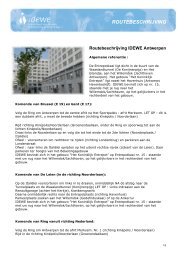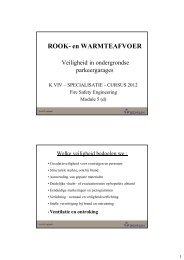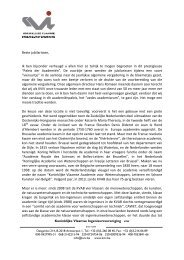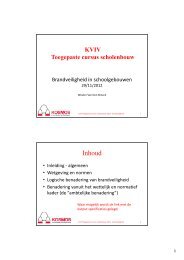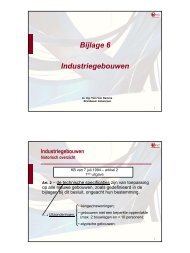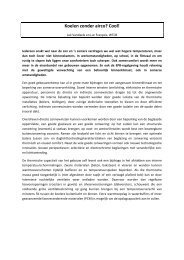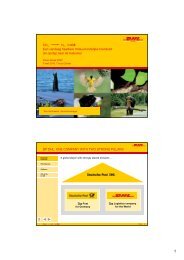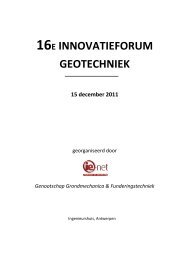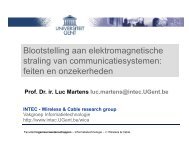Schoonbaert volledig - ie-net
Schoonbaert volledig - ie-net
Schoonbaert volledig - ie-net
You also want an ePaper? Increase the reach of your titles
YUMPU automatically turns print PDFs into web optimized ePapers that Google loves.
100 S. M. OLENICK AND D. J. CARPENTER<br />
Model Country<br />
Table 6. Continued.<br />
Identifying<br />
Reference Description<br />
HAZARD I US [5] Zone model with extensive egress<br />
capabilit<strong>ie</strong>s<br />
MFIRE US [71] Mine ventilation systems<br />
RadPro AUSTRALIA [122] Fire radiation intensity model<br />
RISK-COST CANADA [72] Computes the expected risk to<br />
life and the fire cost expectation<br />
RiskPro AUSTRALIA [122] Risk ranking model<br />
SMACS US [73] Smoke movement through<br />
air-conditioning systems<br />
SMOKEVIEW US [74] Visualization program for FDS<br />
SPREAD US [75] Predicts burning rate and spread<br />
rate of a fire ignited on a wall<br />
using data from bench-scale tests<br />
UFSG US [76] Predicts upward flame spread and<br />
growth on non-charring and<br />
charring materials<br />
WALLEX CANADA [77] Calculation of heat transfer from<br />
window fire plume to wall<br />
above window<br />
These models have been identif<strong>ie</strong>d by the authors, but no references or survey information was<br />
provided: COFRA (US), DOW Indices (US), FREM (Australia), Risiko (Switzerland).<br />
CONCLUSIONS AND FUTURE WORK<br />
The number of models identif<strong>ie</strong>d by the fire engineering community has<br />
increased substantially over the last ten years. Of particular interest is the<br />
increase in available f<strong>ie</strong>ld and miscellaneous models. The f<strong>ie</strong>ld models<br />
are increasing in numbers and complexity due to increases in available<br />
computer resources, research, and practical knowledge. The miscellaneous<br />
models are increasing in numbers due to a greater, more accessible database<br />
of fire data. Therefore, computer fire modeling is moving in a trend to<br />
provide predictions that are more accurate, as well as predictions about fire<br />
phenomenon that previously no computer fire model addressed.<br />
The database of survey results will be made available on the inter<strong>net</strong> for<br />
free, at www.firemodelsurvey.com and will likely supplement another model<br />
survey being conducted currently by the International Council for Research<br />
and Innovation in Building and Construction (CIB) which is surveying<br />
models on building performance, including fire performance [7]. It is the<br />
hope of the authors that the developers will continue to utilize the survey as<br />
a means of providing information about their model to the fire engineering<br />
community.




